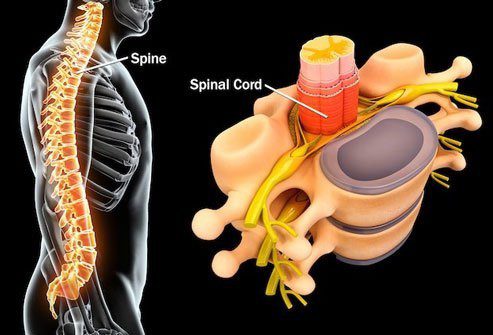there are over 600k doctor visits annually regarding back pain with conditions being…
- Scoliosis
- Slipped Disk
- Herniated Disk
- Kyphosis
- Hyper Lordosis
- Cervical Spondylosis
- Osteoarthritis
- Spinal Stenosis
- Ankylosing Spondylitis
- Spondylolisthesis
- Osteoporosis
- Osteopenia
- Sciatica
When you are in pain the “fight or flight” of your central nervous system is heightened. By this being heightened, your pain is that much worse. Pain will cause high blood pressure, it affects your posture which in turn affects the health of your organs and the entire digestive track. Often in pain it even hurts to breath. Shallow breathing will lessen the health of organs and slow the digestive track.
The human skeleton is the internal framework of the human body. It is composed of around 270 bones at birth – this total decreases to around 206 bones by adulthood after some bones get fused together. The bone mass in the skeleton reaches maximum density around age 26.
The spine is only happy when it’s four natural curves are present (and not over or under developed) in our body in standing, sitting and supine positions for the spine to remain healthy. There are 33 vertebrae in the spine – 7 cervical, 12 thoracic, 5 lumbar and 9 sacrum/coccyx (which fuse about the age of 26).
Back pain ensues when there is compression on vertebrae or twisting of the vertebrae. Where the transverse process of the vertebrae start to rotate is the most common pain point (even if it’s a minimal rotation) – so please don’t think you’re being a baby if you have pain. It’s real and substantiated!
Fun facts on spinal development:
- Babies are born with a C-shaped spine
- The spine first develops a “S” shape when the baby starts to raise their head – the cervical spine is now being formed
- The lumbar curve develops last and develops during crawling when the weight of the baby’s belly pulls the lumbar curve down
- Spinal development curves finish between 12 – 18 months when baby starts walking upright
- The sacrum and coccyx fuse at about 26 yrs of age. They fuse to securely hold the weight of the shoulders and pelvis on a mature adult body.

Let me add, it is important for the young people (under the age of 26) to understand that the spine is not fully solid until the age of 26. I caution you to this important information for those of you that are weight lifters – the heavy squats using sizeable weight, the dead lifts with heavy weights…. be aware the result of this (if under the age of 26) is compression of the disks and after a while they just give out = bulged disks in the lumbar spine or worse yet herniation.
To understand the anatomy of a rib in a spine with scoliosis means this –
- the rib push laterally and anteriorly on the concave side.
- The lamina is thinner and vertebral canal narrower on the convex side.
- The spinous process deviates to the concave side.
- The vertebral body is distorted toward the convex side.
- On the convex side (curve side) the rib is pushed posteriorly and the thoracic cage is narrowed.
Pinched nerves and compressed disks are looking for relief. Are you safely tractioning your spine for relief of compression of nerves and disks? ScolioYoga utilizes traction to help relieve the pain of these compressions and bring alignment back to center.
Note: It is important to see a doctor if your back pain is severe (5-10 on a scale of 10), has not lessened over several weeks, you have a fever, become incontinent, pain radiates out to the fingers or toes, you cannot move, or you have a severe injury or fracture. A diagnosis is helpful for treatment, and also points you in a specific direction for that treatment. It is also important to get clearance from a doctor to take a ScolioYoga or ScolioPilates class after seeking a diagnosis, in order to begin or return to these modalities.
